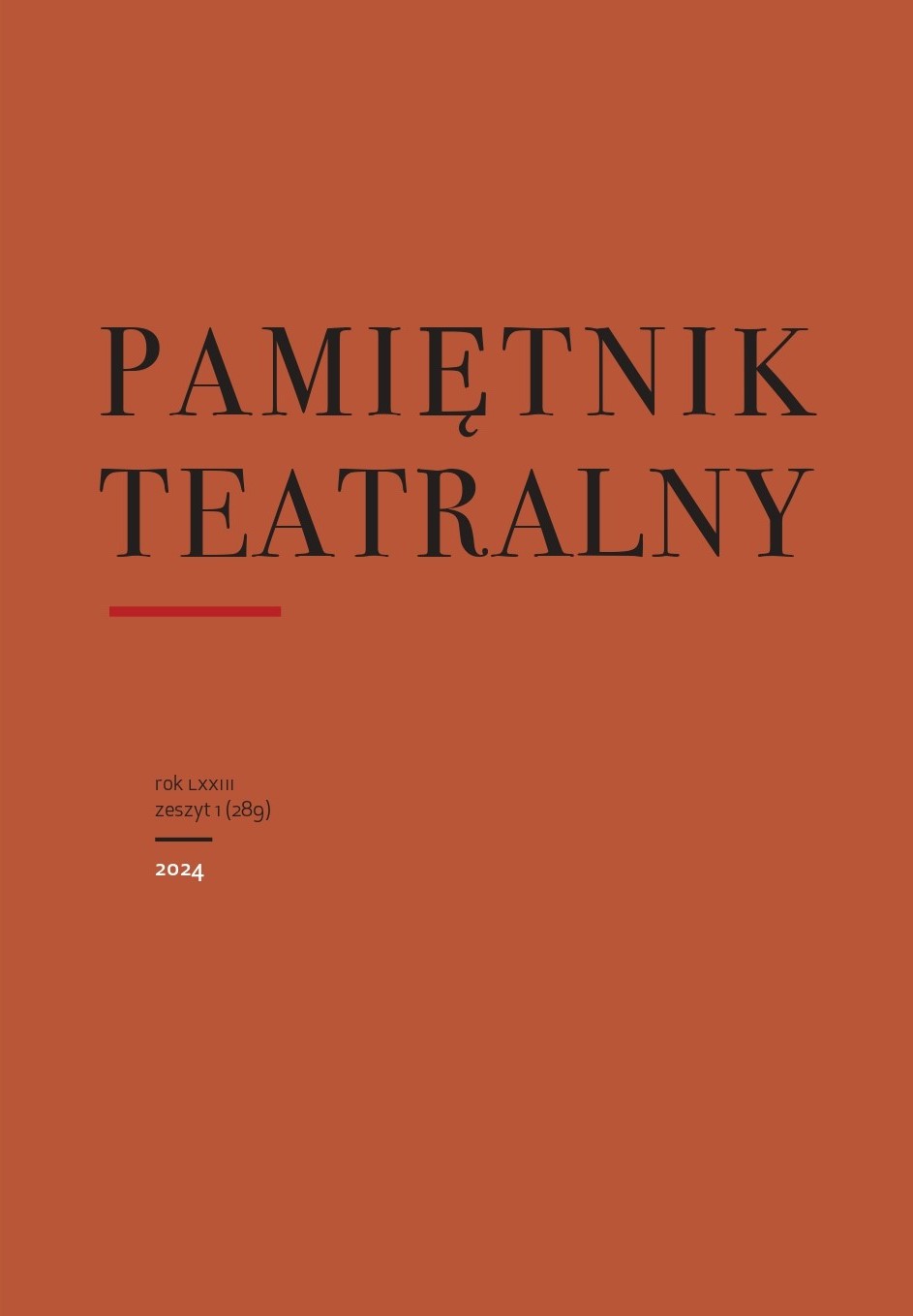The Mirror Effect: In Search for the Spectator of Calderón’s Theatrum Mundi
Abstract
The article focuses on the theatrum mundi metaphor in Calderón, viewed in the context of the debate concerning the metatheatrical dimension of his plays. It discusses studies on the subject preceding the metatheatre theory by Lionel Abel (Ernst R. Curtius, Walter Benjamin, Jean Jacquot), as well as the ensuing debate on metatheatre among Spanish Golden Age scholars and its implications for the comedia research (Henryk Ziomek, Catherine Larson, Thomas A. O’Connor, F. P. Casa, Urszula Aszyk, Katarzyna Mroczkowska-Brand, Jonathan Thacker, Graciela Balestrino, Kasia Lech). Sławomir Świontek’s concept of metatheatre is applied to analyse La vida es sueño and El gran teatro del mundo, and both are shown to be paradigmatic and exemplary metatheatre plays. The author discusses the meta-enunciative properties of dramatic dialogue and its metatheatrical cues in Calderón and underscores the importance of the mise en abyme effect implied by the distinctly self-reflexive qualities of the plays. The use of metatheatrical devices is studied throughout the playwright’s work, in the comedia (La vida es sueño and Amor, honor y poder), auto sacramental (El gran teatro del mundo and La protestación de la fe), as well as entremés (El toreador), and mojiganga (Mundinovo, Las visiones de la muerte). The resulting metatheatrical quality, achieved through Calderón’s targeting on the spectator-actor and reality-fiction relations, lets the audience look into the mirror of theatre to see infinitely reproducing reflexions of themselves, viz. the theatre of the world.
Keywords:
theatrum mundi, Pedro Calderón de la Barca, metatheater, drama history, Spanish drama 1600-1700References
Aszyk, Urszula. Corrale de comedias: Publiczne i stałe teatry w Hiszpanii. Toruń: Wydawnictwo Adam Marszałek, 2005.
Google Scholar
Baczyńska, Beata. Dramaturg w wielkim teatrze historii: Pedro Calderón de la Barca. Wrocław: Wydawnictwo Uniwersytetu Wrocławskiego, 2005.
Google Scholar
Baczyńska, Beata. “Świat, teatr, życie i sen w dramacie Calderona «Życie jest snem»”. W: Wielki Teatr Świata: Wykłady otwarte na scenie przy Wierzbowej, tom 1, redakcja Aneta Pawlak. Warszawa: Teatr Narodowy, 2003.
Google Scholar
Baczyńska, Beata. “«Życie jest snem» i «Książę Niezłomny», czyli dwa «polskie» dramaty Pedro Calderóna de la Barca”. W: Arcydzieła literatury hiszpańskiej: Dziesięć wykładów, redakcja Magda Potok-Nycz. Poznań: Wydawnictwo Naukowe Uniwersytetu im. Adama Mickiewicza, 2016.
Google Scholar
Benjamin, Walter. Źródło dramatu żałobnego w Niemczech. Tłumaczenie Andrzej Kopacki. Warszawa: Wydawnictwo Sic!, 2013.
Google Scholar
Curtius, Ernst Robert. “Metafory teatralne”. W: Literatura europejska i łacińskie średniowiecze, tłumaczenie Andrzej Borowski et al. Kraków: Universitas, 1997.
Google Scholar
Gadamer, Hans Georg. Prawda i metoda: Zarys hermeneutyki filozoficznej. Tłumaczenie Bogdan Baran. Warszawa: Wydawnictwo Naukowe PWN, 2004.
Google Scholar
Jacquot, Jean. “Le ‘Théâtre du monde’ de Shakespeare à Calderón”. Revue de littérature comparée 31 (1957).
Google Scholar
Larson, Catherine. “El metateatro, la comedia y la crítica: Hacvia una nueva interpretación”. In Actas del X Congreso de la Asociación Internacional de Hispanistas, edited by Antonio Vilanova. Barcelona: Promociones y Publicaciones Universitarias, 1992.
Google Scholar
Mroczkowska-Brand, Katarzyna. Overt Theatricality and the “Theatrum mundi” Metaphor in Spanish and English drama, 1570–1640. Kraków: Select, 1993.
Google Scholar
Pavis, Patrice. Słownik terminów teatralnych. Tłumaczenie Sławomir Świontek. Warszawa: Wydawnictwo Naukowe PWN, 2002.
Google Scholar
Świontek, Sławomir. Dialog – dramat – metateatr: Z problemów teorii tekstu dramatycznego. Warszawa: Oficyna Wydawnicza Errata, 1999.
Google Scholar
Ubersfeld, Anne. Czytanie teatru I. Tłumaczenie Joanna Żurowska. Warszawa: Wydawnictwo Naukowe PWN, 2002.
Google Scholar
Ziomek, Henryk. “A New View in Renaissance and Baroque Drama”. Kwartalnik Neofilologiczny 33, nr 2 (1986): 137–147.
Google Scholar
Statistics
Abstract views: 376PDF downloads: 229
License

This work is licensed under a Creative Commons Attribution 4.0 International License.
The author grants a royalty-free nonexclusive license (CC BY 4.0) to use the article in Pamiętnik Teatralny, retains full copyright, and agrees to identify the work as first having been published in Pamiętnik Teatralny should it be published or used again (download licence agreement). By submitting an article the author agrees to make it available under CC BY 4.0 license.
From issue 1/2018 to 3/2022 all articles were published under a Creative Commons license CC BY-NC-ND 4.0. During this period the authors granted a royalty-free nonexclusive license (CC BY-ND 4.0) to use their article in Pamiętnik Teatralny, retained full copyright, and agreed to identify the work as first having been published in our journal should it be published or used again.









